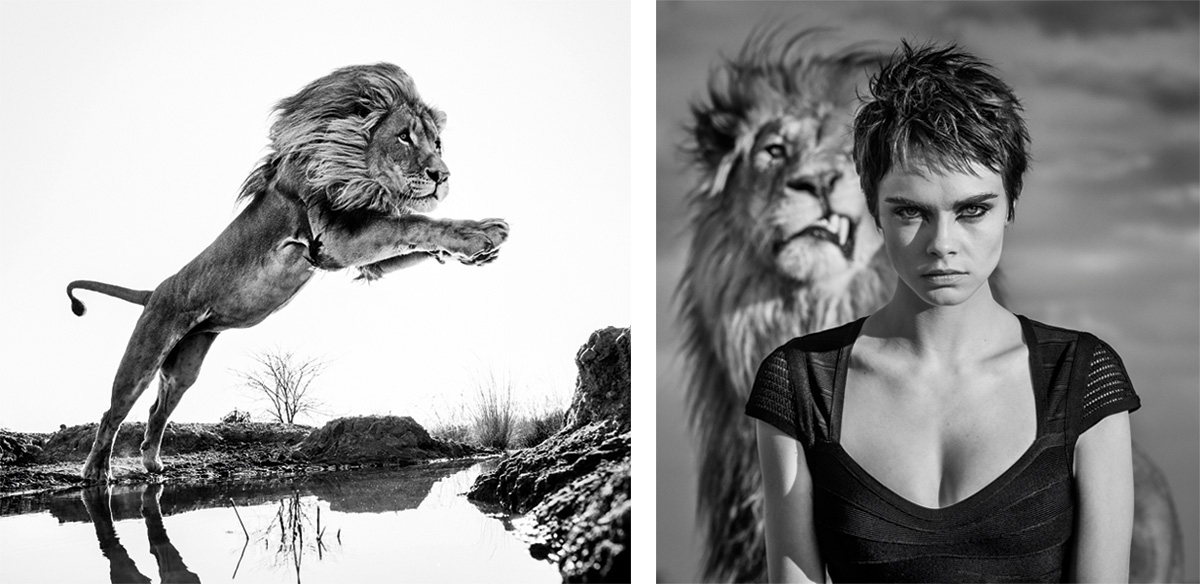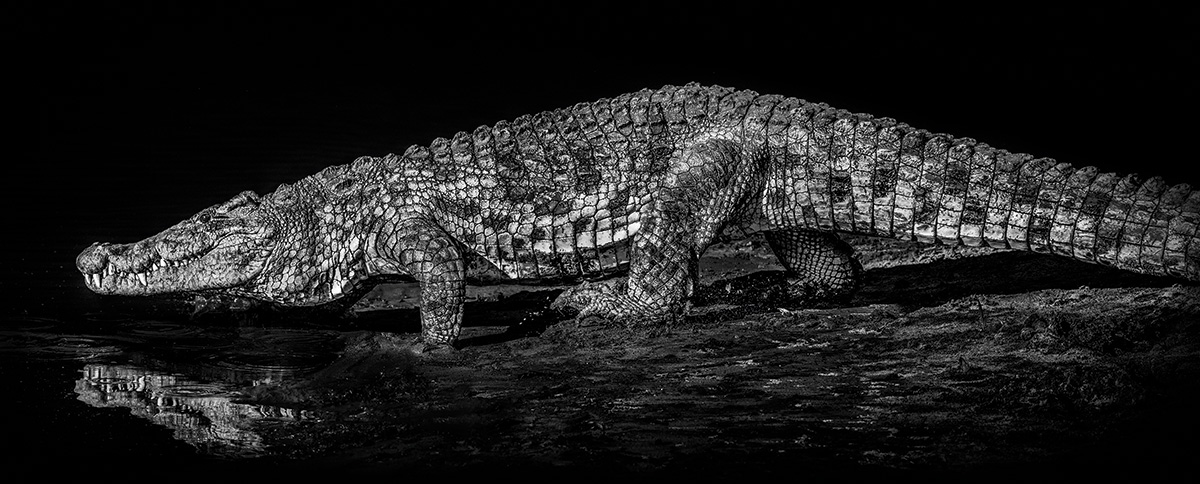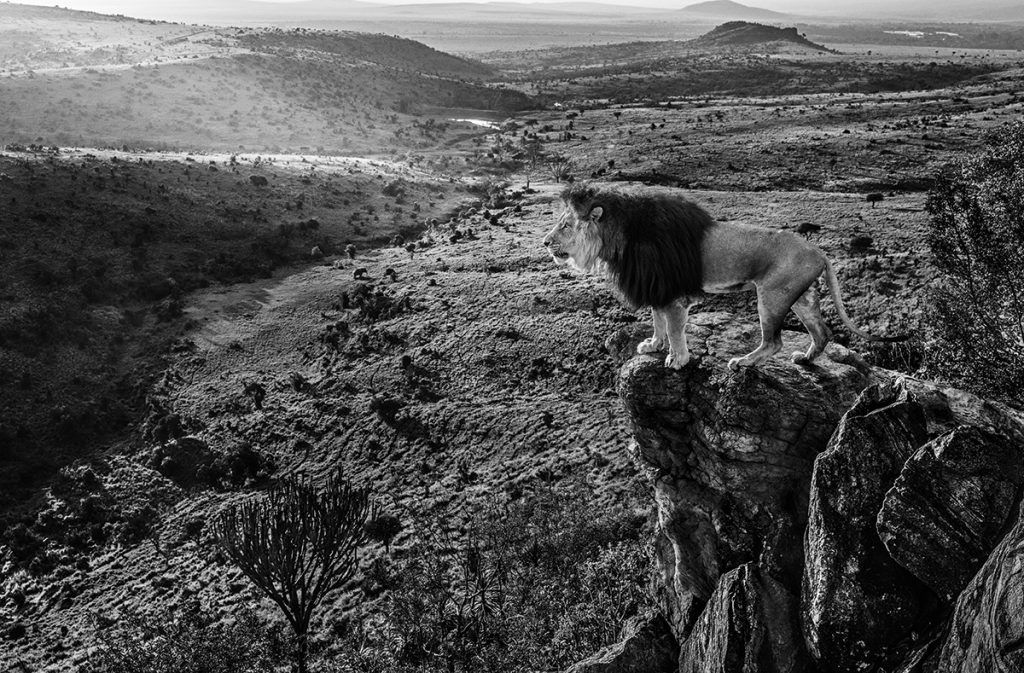David Yarrow leads a life most of us could only dream of; travelling to far-off lands photographing the indigenous communities, landscapes and – most importantly – the animals he encounters along the way. His work plays a big role in his other life as an avid conservationist where his fine-art photography is a conversation starter to the plight that many of the world’s animals currently face. His latest exhibition, in which he collborated with Kevin Richardson, recently graced the walls of the new G&M Gallery in Monaco;
F.1.M. : Tell us a little about your background and how you came to be a world-renowned animal photographer.
D.Y. : I started as a sports photographer: I covered the World Cup in 1986, I did an Olympics…This was in my early twenties when I was still at college, and for a little while afterwards. I would always have this worry that when you’re photographing Federer against Nadal, for example, there’s a hundred photographers around the tennis court; how can one photographer get a picture that no-one else has got? So I was looking for something slightly more creative. And I must say I found that difficult. There weren’t many people in the industry that I looked up to.
And then I went into finance! I spent a lot of time thinking about how I could make a living from being a photographer. Don’t think that if you go into art it means you can suddenly forget about debits and credits, you still have that responsibility. Far too many photographers think that once you’re an artist you can dismiss this. I just waited until I had my business model right before I took the plunge.

F.1.M. : There’s such a difference between what you do now and working in finance, yet would you say there is some crossover between these worlds?
D.Y. : If I go to the Masai Mara and there’s a hundred photographers photographing a crossing of wildebeest, what’s the point in doing that? The analogy here is that you should go where people don’t go, and the best traders tend to do that. The one thing that unites all of my photographs is that I was the only person there; you’ve got to be in places that aren’t crowded, like the traders. You’ve got to have authenticity and you’ve got to do things that are original.
F.1.M. : Your work is now very focussed on animals in the wild. Which have you found the most interesting to photograph?
D.Y. : Well, as you can see in my exhibitions around the world, I don’t take pictures of ants or hamsters or small animals in general. Big animals sell. Big, iconic animals.
So for me the big ones are: the elephant, the tiger, the rhino, the lion, the brown bear and the grizzly bear and maybe the giraffe, an extraordinary looking animal. And even hippos, big hippos!
F.1.M. : And to capture these images, it must take a lot of patience?
D.Y. : Sometimes… But normally we know what we are trying to do, so we try and get the odds in our favour. I don’t want to be somewhere waiting three days for a picture. Polar bears though, you have to wait. They’re spectacular. Once I spent a week and didn’t see a single bear, which meant a lot of down time.

F.1.M. : Your work also tells a story about conservation, documenting the changes in the environment year on year. Seeing this first-hand, what do you think is the first thing that should be done to save the planet?
D.Y. : I’d say nothing is black and white. I go to places in Africa where there’ve been no elephants poached for six years and where the rhino population has doubled. I go to places in Africa where there are too many elephants now for the eco system to look after. I think conservationists have to be careful that they don’t always tell just bad news, because bad news doesn’t get money. So thanks to people like Kevin (Richardson, “The Lion Whisperer”) there is hope.
Certainly the starting point is awareness. Everybody is very aware that this is a ticking time bomb. The legacy of our generation is not a very good one because although this is the longest period of peace in the world, it will be remembered as the time when key animals in the world halved. I think the big issue, which has affected the lion as much as anything else, is not the poaching that makes the headlines, it’s quite simply world population growth. And with population growth, comes habitat loss and animals losing the place they live. I don’t know, I don’t have every answer, but the smart answer at the moment would be to buy land, even if that doesn’t sound very romantic. And buy that land for the animals. It might not be the same as free roaming but it’s not a zoo. Just places where they will be protected.

F.1.M. : And when putting on your conservation head, does this influence what you decide to focus your photography work on?
D.Y. : Yes, and this is why a majority of my pictures focus on animals in Africa. I worry more about them than I worry about the polar bears in the arctic. You see all these pictures of Greenland melting but these bears are very smart animals, so they’re not going to say I’m giving up because it’s getting warmer. It’s still very cold up there, they’ll just adapt to their new circumstances. While a lot of people may disagree with me I’m three times more concerned about the lion than the polar bear right now. I just hope my images in this wonderful new gallery can start conversations about conservation, and Monaco is the place where people might have the resources to help out!

